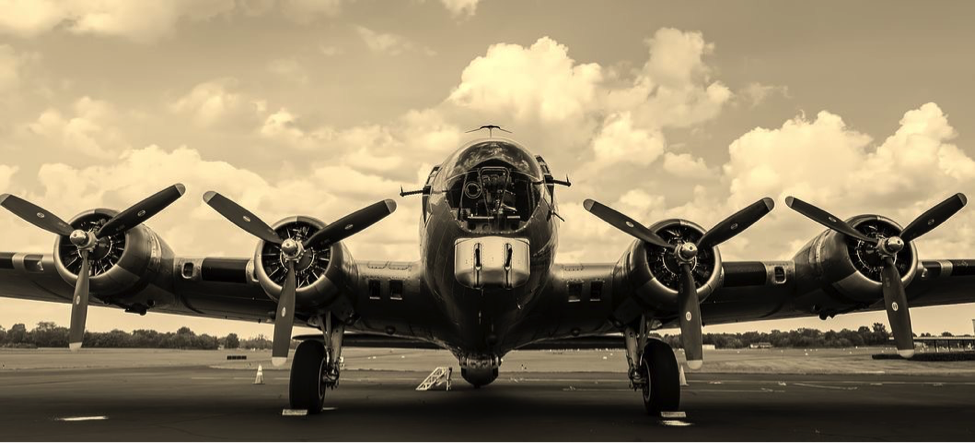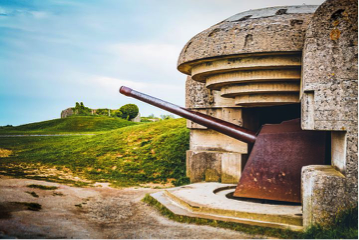Though few think of what World War II would have been like without the US’s role in the war, there was a time when the US was in consideration over whether or not they would get involved. The truth is that before the Japanese attacked Pearl Harbor on December 7th, 1941, the American leaders and forces were conflicted over whether they should jump in or if they would be better off staying out of it.
Even with the war expanding into parts of Asia and Europe during the late ’30s and early ’40s, there wasn’t a clear consensus on what the US would decide to do until they were attacked by Japan.
In fact, there were so many factions and groups that were partially or completely opposed to participating in the war at all, both inside and outside of the US. Making the decision to jump into the war was not taken lightly by any of the countries and nations that were either directly or indirectly impacted by World War II.
Fascism in World War II
It was Oswald Mosley and the British Union of Fascists (out of Britain) that were openly opposed to the war. They stated that jumping into another world war with the Germans was not in the best interest of Britain as a nation. They were staunch in their own beliefs that it wasn’t their place to meddle in the affairs that other nations were taking up with Germany and that it was only in their responsibility to fight for “Britain and Britain alone.”
Editorial cartoons of the day often showed that Britain was more in need to prepare their forces for a defensive position against the forces of Japan, and that starting a war with Germany would jeopardize their interests in Asia and divide their efforts. From then on, Mosley dedicated all of the efforts of his party to what he referred to as the “Peace Campaign.” This would be used to call a referendum on the continuation of the war and represent his and his party’s advocating for the negotiation of a peace treaty with Germany and their forces. This campaign ended shortly after when Mosely, as well as many other members of the British Union of Fascists (BUF), were interned under Deference Regulation 18B, during May of 1940.
The Pacifist Perspective
Even though pacifist perspectives aren’t the ones that are usually studied either during or before the Second World War, there were a few organizations and factions that were totally opposed to the war. The Peace Pledge Union maintained their beliefs in opposing all wars. Then, there was the Bruderhof which was a pacifist Christian community that elected to relocate from England into the jungles of Paraguay, as they would rather do that than participate in any effort that contributed to the war.
There was also Mohandas K. Gandhi’s pacifist movement that opposed the war as well. They advocated against the war so aggressively that they even vocalized their belief that the British should surrender. Not only that, but they also proposed that the Jews only offer non-violent resistance to Nazi forces. Conversely, Gandhi still supported using Indian troops and Indian territory in a sensible exchange for the guarantee of Indian independence, that would be promised after the end of the war.
Socialism and the War
What many don’t realize is that Socialism advocates were divided back in the 1930s. Pacifism was an integral part of the socialist movement during this time. In fact, Britain’s Independent Labour Party shared in those pacifist values. Ironically, those pacifist values were also amongst the militant opposition to fascism. During the Popular Front period, the Comintern had allied with some other anti-fascist parties, including certain right-winged parties. The policy was later closed by the Comintern around the time that the Soviet Union signed a nonaggression pact with Hitler. This occurred back in August of 1939.
During the Nazi-Soviet pact, the various Communist front organizations maintained their opposition to the war. This was indirectly following orders from Moscow. However, it was during this time that Joseph Stalin also ordered a series of attacks on:
– Poland
– Finland
– Latvia
– Estonia
– Romania
– And Lithuania
Stalin actually used communist parties and other front groups to hold fast in their opposition to the coming war. Meanwhile, he was gathering military preparations to prepare for war in some involved countries and other countries that would potentially be involved. This was his process for making Britain and France more vulnerable to resisting aggression, as well as a means of keeping the United States out of the war.
The US had its share of peaceful organizations as well that were in opposition to the war. The American Peace Mobilization along with members of the Abraham Lincoln Brigade were in full protest of the war, the Lend-Lease Act, and conscription as well. They did this by attacking the Americans and Roosevelt, saying that he wanted to get a foothold in Europe to take his stake in a warring world so that Wall Street and the American economy might prosper.
Of course, the tune of the communist parties around the world changed when Germany later invaded the Soviet Union in June of 1941. They then became advocates for material support to be sent to Soviet Russia.
There were however a small number of socialist parties, which did not include Communist International members, who continued to stay in opposition to the war. One of the most famously known was Leon Trotsky, who had mapped out a Proletarian Military Policy, calling for industrial action as well as standing in opposition to the war. Anarchists and left-winged communists took a similar position to Trotsky.
The Communist Party of the United States of America (The most popular communist organization in the US) held true to their anti-fascist outlook on intervening throughout the Second World War. They, of course, were basing their policies on the need of a popular front against fascism.
Nationalism and World War II
There were a few nationalist movements in some colonial countries that refused to take part in the war. This notion was probably strongest in India, where some nationalists even went beyond normal opposition to the war. They formed the Indian National Army so that they could fight along with Japanese forces if they needed to.
Meanwhile, in the United States, there were more than 125 African-Americans that were put in prison for protesting against the draft. One of these men was Elijah Muhammad. Many of these individuals associated with the Pacific Movement of the Eastern World or the Nation of Islam. They actually viewed the Japanese as the champions and overlords of the non-white people of the world.
Isolationist Sentiments and the War
Since the United States was separated from the war by thousands of miles of ocean, it was perhaps the easiest of nations to be isolationist about the war. After World War I, there were many Americans that hoped they would be able to sit out on the Second World War. The isolationists in the states were led by the America First Committee. They mounted a loud and large challenge to President Roosevelt’s ambitions to jump into the war. In fact, Charles Lindbergh was one of the most famous isolationists in this movement. This movement was the strongest and most prevalent in the midwest amongst the greater concentrations of German American populations.
Conclusion
All around, there are many communities, organizations, and factions around the globe that were opposed to entering the war. The further Germany got into their conquering and expansion, the more difficult it became for nations to avoid becoming participants into what has been one of the largest international conflicts that the world has ever seen.

